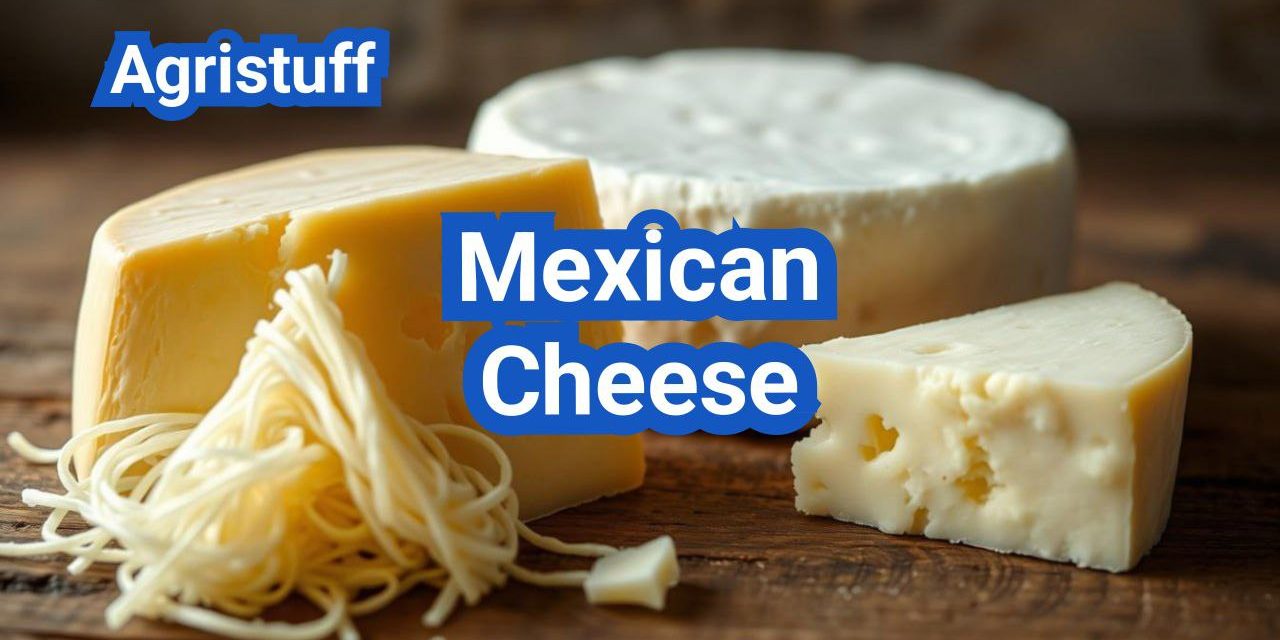The rich flavors of Oaxaca cheese and Queso Fresco are staples in many traditional recipes. These Hispanic-style cheeses have gained popularity in the U.S., making it easier to create authentic dishes.
This guide will explore the diverse world of cheeses used in Mexican cuisine, including the creamy texture of Oaxaca and the crumbly texture of Queso Fresco. We will provide insights on the types of cheese available in the U.S. and what to look for when shopping.
Key Takeaways
- Understanding the different types of Hispanic-style cheese available in the U.S.
- Learning about the unique characteristics of Oaxaca cheese and Queso Fresco
- Discovering where to buy authentic Mexican cheeses in the U.S.
- Exploring the role of cheese in traditional Mexican recipes
- Tips for selecting the right cheese for your next Mexican dish
The Rich Heritage of Mexican Cheese
The story of Mexican cheese is one of cultural fusion, blending indigenous traditions with European cheesemaking techniques. Before the arrival of European settlers, cheese was not a native Mexican product. However, with the introduction of dairy farming and cheesemaking by Spanish conquistadors, a new cheese culture began to emerge.
Historical Development of Cheesemaking in Mexico
The historical development of cheesemaking in Mexico was significantly influenced by European, particularly Spanish, cheesemaking traditions. Over time, Mexican cheese makers adapted these techniques to incorporate local ingredients and preferences, resulting in a unique cheese culture. Cheeses like Queso Fresco and Oaxaca cheese became integral to Mexican cuisine, reflecting the country’s cultural heritage.
Regional Variations Across Mexico
Mexico’s diverse regions have given rise to a wide variety of cheeses, each with its own characteristics. The north and south have different cheese-making traditions, influenced by local climate, geography, and cultural practices. For example, the Yucatán Peninsula is known for its Queso Fresco, while Oaxaca is famous for its string cheese, also known as Oaxaca cheese.
| Region | Popular Cheese | Characteristics |
|---|---|---|
| Oaxaca | Oaxaca Cheese | Stringy, mild flavor |
| Yucatán | Queso Fresco | Crumbly, mild, slightly tangy |
| Northern Mexico | Asadero | Mild, creamy, excellent for melting |
The regional variations in Mexican cheese not only reflect the country’s diverse cultural landscape but also contribute to its rich gastronomic identity. Understanding these differences is key to appreciating the complexity and richness of Mexican cheese.
Complete Guide to Mexican Cheese Types

Mexican cheese encompasses a wide range of varieties, each with its unique characteristics and uses. The rich diversity in Mexican cheese is attributed to the different regions and traditional cheesemaking methods.
Fresh vs. Aged Mexican Cheeses
Mexican cheeses can be broadly classified into fresh and aged categories. Fresh cheeses, such as Queso Fresco and Panela, are known for their soft texture and mild flavor. They are often used in dishes where a delicate cheese flavor is desired.
Aged cheeses, like Cotija and Añejo, have a stronger flavor and a harder texture. They are ideal for grating over dishes or serving as a table cheese.
Melting vs. Crumbling Varieties
Another way to categorize Mexican cheese is by their melting properties. Cheeses like Asadero and Oaxaca are known for their excellent melting qualities, making them perfect for dishes like quesadillas and cheese sauces.
On the other hand, cheeses such as Cotija and Queso Fresco are typically crumbled and used as a topping or mixed into dishes for added flavor.
| Cheese Type | Texture | Typical Use |
|---|---|---|
| Queso Fresco | Soft, crumbly | Tacos, salads |
| Oaxaca | Soft, stringy | Melting, quesadillas |
| Cotija | Hard, crumbly | Grate over dishes, salads |
| Asadero | Soft, semi-soft | Melting, cheese sauces |
Queso Fresco: The Versatile Fresh Cheese
Among the various types of Mexican cheese, Queso Fresco stands out for its versatility. This fresh cheese is a staple in Mexican cuisine, offering a mild flavor and crumbly texture that makes it ideal for a variety of dishes.
Characteristics and Flavor Profile
Queso Fresco is characterized by its white color and crumbly texture, similar to feta cheese. It has a mild, slightly tangy flavor that doesn’t overpower other ingredients, making it a versatile choice for cooking. The cheese is typically made from cow’s milk or a combination of cow and goat’s milk, and it’s known for its high moisture content, which contributes to its fresh taste.
Traditional Uses in Mexican Cuisine
In Mexican cuisine, Queso Fresco is often used as a topping for various dishes, including tacos, salads, and soups. Its crumbly texture and mild flavor make it an excellent addition to these dishes, adding depth without overwhelming the other flavors. Some traditional uses include:
- Crumbling over tacos and tostadas
- Adding to salads for a fresh, tangy flavor
- Using as a topping for soups and stews
- Incorporating into fillings for enchiladas and other Mexican dishes
Queso Fresco’s versatility and mild flavor make it a valuable ingredient in many Mexican recipes, and its popularity continues to grow in international cuisine as well.
Oaxaca Cheese: Mexico’s String Cheese

Oaxaca cheese, known as Mexico’s string cheese, is a staple in Mexican cuisine, cherished for its soft, stringy texture and ability to melt beautifully. This cheese is a favorite among locals and visitors alike, and its popularity has spread globally.
Production Method and Unique Texture
The production of Oaxaca cheese involves a traditional process where the curd is stretched and pulled apart, creating its characteristic strings. This labor-intensive method gives Oaxaca cheese its distinctive texture and melting properties. The cheese is typically made from cow’s milk, and its mild flavor makes it versatile for various dishes.
Oaxaca cheese is often compared to mozzarella due to its melting capabilities, but it has a unique flavor profile that sets it apart. The cheese is usually sold in balls or ropes, making it easy to shred or slice for different recipes.
Best Dishes for Oaxaca Cheese
Oaxaca cheese is a key ingredient in many traditional Mexican dishes. It’s particularly popular in quesadillas, where its melting properties are showcased. The cheese is also used in chili rellenos, stuffed peppers filled with melted cheese, and in various soups and stews for added richness.
“Oaxaca cheese is the heart of many Mexican dishes, bringing a creamy texture and mild flavor that complements a wide range of ingredients.”
Some other popular uses include topping tostadas or grilled corn, and incorporating it into tamales for an extra layer of flavor. Its versatility and melting properties make Oaxaca cheese a favorite among chefs and home cooks alike.
Cotija: The Mexican Parmesan
Cotija cheese, often referred to as the “Mexican Parmesan,” is a staple in Mexican cuisine, known for its crumbly texture and salty flavor. This aged cheese is named after the town of Cotija in Michoacán, Mexico, where it originated.
Fresh vs. Aged Cotija
Cotija cheese comes in two main forms: fresh and aged. Fresh Cotija is white, soft, and mild, while aged Cotija is dry, crumbly, and has a more pronounced flavor. The aging process significantly alters the texture and taste, making aged Cotija a favorite for sprinkling over dishes.
Popular Uses for Cotija Cheese
Cotija cheese is incredibly versatile and is used in various Mexican dishes. It’s commonly sprinkled over elotes (grilled corn), salads, and soups. The aged version is particularly popular for its ability to add a salty, umami flavor to dishes.
| Dish | Use of Cotija |
|---|---|
| Elotes | Sprinkled on top for added flavor |
| Salads | Crumbled for a salty kick |
| Tacos | Used as a topping for extra flavor |
As noted by food enthusiasts, “Cotija cheese elevates simple dishes into something extraordinary.” Its unique flavor profile makes it a staple in many Mexican recipes.
Panela: The Fresh Basket Cheese

Among the diverse world of Mexican cheeses, Panela stands out for its unique characteristics and culinary applications. Panela cheese, also known as ‘queso panela,’ is a fresh, smooth, and white cheese that has gained popularity for its versatility in various dishes.
Texture and Flavor Characteristics
Panela cheese is known for its smooth texture and mild, slightly salty flavor. Unlike some other cheeses, Panela doesn’t melt when heated, making it an excellent choice for dishes where you want to maintain the cheese’s integrity. As one chef notes, “Panela’s unique texture makes it perfect for grilling or frying without losing its shape or becoming too runny.”
“The beauty of Panela lies in its simplicity and versatility. It’s a cheese that can elevate a simple salad or be the star of a more complex dish.”
Cooking Applications for Panela
Panela cheese is incredibly versatile and can be used in a variety of dishes. It’s often enjoyed fried until golden and served as a snack or appetizer. It’s also a great addition to salads, providing a nice contrast in texture. Additionally, Panela can be used in grilled cheese sandwiches or as a topping for various Mexican dishes.
In Mexican cuisine, Panela is frequently used in recipes like ‘quesadillas de panela’ or as a topping for ‘tostadas.’ Its mild flavor pairs well with a variety of ingredients, making it a staple in many kitchens.
Asadero: The Perfect Melting Cheese

Asadero, a Mexican cheese with a rich history, is celebrated for its melting properties and is often used in various dishes. This cheese is a staple in Mexican cuisine, particularly valued for its creamy texture and mild flavor.
Origins and Production Methods
Asadero cheese originates from the northern regions of Mexico, where it has been produced for centuries. The production process involves curdling cow’s milk, which is then heated and stretched to create its characteristic smooth texture. The aging process is typically short, preserving its mild flavor and creamy consistency.
Ideal Dishes for Asadero Cheese
Asadero cheese is ideal for dishes that require melting, such as:
- Quesadillas: Its melting properties make it a perfect filling.
- Queso Fundido: A Mexican dish similar to a fondue, where Asadero cheese is melted with chorizo and served with tortillas.
- Nachos: Adds a creamy layer when melted.
Its versatility and melting capabilities make Asadero cheese a favorite among chefs and home cooks alike. Whether you’re preparing traditional Mexican dishes or experimenting with new recipes, Asadero cheese is sure to enhance your culinary creations.
Chihuahua Cheese: Mexico’s Melting Marvel
Among the array of Mexican cheeses, Chihuahua cheese stands out for its unique taste and melting capabilities. Known as “Queso Chihuahua,” this aged, firm cheese has a strong taste that is often utilized in melted cheese dishes and dips.
History and Development
Chihuahua cheese originated in the northern state of Chihuahua, Mexico, where it was developed by Mennonite settlers. The production method involves a process that gives the cheese its characteristic firmness and rich flavor. “The Mennonite community brought their cheesemaking traditions to Mexico, adapting them to local conditions,” notes a cheese expert. This blend of cultures resulted in a distinct cheese that has become integral to Mexican cuisine.
Best Uses in Traditional and Modern Cooking
Chihuahua cheese is a versatile ingredient, perfect for melting in dishes like quesadillas and nachos. Its rich flavor also complements grilled meats and vegetables. In modern cooking, it’s used in innovative recipes, such as cheese-stuffed jalapeños and gourmet grilled cheese sandwiches. As a melting cheese, it’s comparable to other popular varieties, but its unique taste sets it apart.
For those looking to explore authentic Mexican flavors, Chihuahua cheese is an excellent choice. Brands like V&V Supremo offer high-quality Queso Chihuahua that’s perfect for both traditional and modern recipes.
Understanding Mexican Cheese Differences

Mexican cheese varieties can be confusing, especially when similar names are used for different products. The nuances between these cheeses are not just about nomenclature; they significantly impact flavor profiles and culinary applications.
Queso Blanco vs. Queso Fresco: Key Distinctions
Queso Blanco and Queso Fresco are often confused due to their similar names and fresh characteristics. However, they have distinct differences in terms of production methods and taste.
- Queso Blanco: This cheese is often made from a combination of cow’s and goat’s milk. It’s known for its creamy texture and mild flavor, making it ideal for melting.
- Queso Fresco: Typically made from cow’s milk, Queso Fresco has a crumbly texture and a tangy, slightly sour taste. It’s often used as a topping for various dishes.
While both are considered “fresh” cheeses, their differences in texture and flavor make them suitable for different culinary uses.
Mexican Manchego vs. Spanish Manchego
Another common confusion arises between Mexican Manchego and Spanish Manchego. Despite sharing a name, these cheeses have different origins and characteristics.
“Manchego cheese, whether from Mexico or Spain, has its own unique story to tell through its flavor and texture.”
- Mexican Manchego: This cheese is semi-firm with a mild, slightly sweet flavor. It’s often used in grilled cheese sandwiches and fondues.
- Spanish Manchego: Originating from La Mancha, Spain, this cheese is made from sheep’s milk. It has a nutty, slightly sweet flavor and is often aged, giving it a firm texture.
The difference in milk source and production methods results in distinct flavor profiles, making each Manchego variety unique.
How to Use Mexican Cheese in Your Cooking

Using the right Mexican cheese can elevate your cooking, whether you’re making tacos or street corn. Mexican cheese is a staple in many traditional dishes, and understanding which type to use can make a significant difference in flavor and authenticity.
Best Cheeses for Tacos and Quesadillas
For tacos, Queso Fresco is an excellent choice due to its crumbly texture and mild flavor. It adds a nice contrast to the other ingredients in a taco. For quesadillas, Oaxaca cheese is preferred because it melts well and has a stringy texture, similar to mozzarella.
When making quesadillas, you can also mix Asadero or Chihuahua cheese with Oaxaca for an even creamier result. These cheeses melt beautifully and provide a rich, velvety texture to your quesadillas.
Cheese for Mexican Street Corn and Other Specialties
Mexican street corn, or elotes, is typically topped with Cotija cheese. This aged cheese has a sharp, salty flavor that complements the sweetness of the corn. For other specialties like enchiladas or chiles rellenos, you can use a combination of cheeses. For example, a mix of Queso Fresco and Panela can provide both texture and flavor.
As “Cheese is the soul of Mexican cuisine,” as some might say, understanding the different types and their uses can greatly enhance your cooking. Experimenting with various Mexican cheeses will allow you to discover new flavors and textures, making your dishes more authentic and delicious.
Finding Mexican Cheese in the U.S.

Mexican cheese is becoming increasingly popular in the U.S., and it’s easier than ever to find in many supermarkets. The growing demand for Hispanic-style cheese has led to a wider availability of these products across various retail channels.
Major Supermarket Chains Carrying Mexican Cheese
Many major supermarket chains now carry a selection of Mexican cheeses. Stores like Walmart, Kroger, and Safeway often have a dedicated Hispanic or international foods section where you can find brands like Queso Fresco, Oaxaca, and Cotija cheese. Some stores may also carry store-brand versions of these cheeses.
| Supermarket Chain | Common Mexican Cheeses Carried |
|---|---|
| Walmart | Queso Fresco, Oaxaca, Cotija |
| Kroger | Oaxaca, Queso Fresco, Asadero |
| Safeway | Cotija, Queso Fresco, Panela |
Specialty Stores and Hispanic Markets
For a more authentic and diverse selection, consider visiting specialty stores or Hispanic markets. These stores typically carry a wide range of Mexican cheeses, including harder-to-find varieties. You may also find cheeses made by local or regional producers, offering unique flavors and textures.
According to a quote from
“The Art of Mexican Cooking” by Diana Kennedy, ‘Mexican cheese is an integral part of the country’s cuisine, with each region having its own specialties.’
This highlights the diversity and richness of Mexican cheese, making it worthwhile to explore various sources to find the perfect cheese for your needs.
By exploring both mainstream supermarkets and specialty stores, you can discover a wide range of Mexican cheeses to enhance your cooking and dining experiences.
Understanding Labels: Hispanic-Style Cheese in the U.S.

The labeling on Hispanic-style cheese products in the U.S. often leaves consumers perplexed about the origin and type of cheese they’re buying. To make informed decisions, it’s essential to understand the terminology used on the packaging.
Decoding Packaging and Terminology
When shopping for Mexican cheese, you may come across terms like “Hispanic-style” or “Mexican-style.” These labels don’t always guarantee authenticity, as they can refer to cheeses made in the U.S. using traditional Mexican methods. Look for phrases like “imported from Mexico” or “made in the USA with Mexican heritage” to understand the cheese’s origin.
Additionally, pay attention to the type of cheese. Labels may indicate if it’s a specific variety, such as Queso Fresco or Oaxaca cheese. Be aware that some products may be blends or imitations, so check the ingredient list and nutrition facts to ensure you’re getting the desired product.
Popular American Brands of Mexican Cheese
Several American brands have gained popularity for producing high-quality Mexican cheese. Companies like Quesos de Monterey and El Pastor offer a range of authentic products. Other brands, such as La Tortilla Factory and Guerrero, specialize in Mexican-style cheeses that are widely available in supermarkets.
When selecting a brand, consider factors like the cheese’s origin, ingredients, and production methods. By understanding the labeling and choosing reputable brands, you can enjoy authentic Mexican cheese at home.
Mexican Cheese Substitutes When You Can’t Find the Real Thing

If you’re struggling to find authentic Mexican cheese, don’t worry, there are substitutes available. While the unique flavors and textures of Mexican cheeses are hard to replicate, everyday cheeses can serve as decent alternatives in a pinch.
Everyday Alternatives for Mexican Cheeses
For Queso Fresco, consider using Feta cheese or a combination of ricotta and a sprinkle of salt. Oaxaca cheese can be substituted with mozzarella or a mild string cheese. When Cotija is not available, Parmesan makes a good alternative due to its similar crumbly texture and salty flavor.
Creating Your Own Mexican Cheese Blends
To create a custom blend, start by mixing cheeses that offer a balance of flavor and texture. For example, combining Monterey Jack with a bit of cotija or Parmesan can mimic the profile of some Mexican cheeses. Experimenting with different ratios can help you find a blend that works for your recipe.
| Mexican Cheese | Substitute | Characteristics |
|---|---|---|
| Queso Fresco | Feta or Ricotta + Salt | Crumbly, mild, salty |
| Oaxaca | Mozzarella or String Cheese | Stretchy, mild, creamy |
| Cotija | Parmesan | Crumbly, sharp, salty |
Safety Considerations for Mexican Cheese
The rich world of Mexican cheese comes with important safety considerations that consumers should be aware of. While Mexican cheese can add rich flavors and textures to various dishes, there are risks associated with certain types, particularly for vulnerable populations like pregnant women.
Pasteurized vs. Unpasteurized Options
One of the primary safety considerations when consuming Mexican cheese is whether it is made from pasteurized or unpasteurized milk. Pasteurization is a process that kills harmful bacteria, making cheeses safer to eat, especially for those with weakened immune systems or during pregnancy. Many traditional Mexican cheeses are made from raw (unpasteurized) milk, which can pose a risk of containing pathogens like Listeria, Salmonella, or E. coli.
According to the FDA, unpasteurized cheeses have been linked to outbreaks of foodborne illnesses. For example, a study highlighted that “soft cheeses made from raw milk are more likely to be contaminated with Listeria”
“Soft cheeses made from raw milk are more likely to be contaminated with Listeria,” according to food safety experts.
Safe Mexican Cheese During Pregnancy
For pregnant women, it’s crucial to be cautious with unpasteurized cheeses. The American Pregnancy Association advises pregnant women to avoid soft cheeses and those made from unpasteurized milk due to the risk of Listeriosis. However, not all Mexican cheeses are off-limits. Pasteurized versions of popular cheeses like Queso Fresco or Oaxaca cheese are safer alternatives. When shopping, always check the label for pasteurization information.
To enjoy Mexican cheese safely during pregnancy, consider the following:
- Choose pasteurized Mexican cheeses.
- Avoid soft, unpasteurized cheeses.
- Check labels carefully for pasteurization information.
By being informed and cautious, pregnant women can still enjoy the flavors of Mexican cheese while minimizing risks.
Storing and Preserving Mexican Cheese
Mexican cheese, with its diverse varieties, requires specific storage techniques to preserve its freshness. Different types of Mexican cheese have unique storage needs to maintain their quality and flavor.
Proper Storage Techniques for Different Varieties
For fresh cheeses like Queso Fresco and Panela, refrigeration is essential. Wrap them tightly in plastic wrap or aluminum foil to prevent drying out. For aged cheeses like Cotija, store them in a cool, dry place, wrapped in paper to allow breathing.
Extending the Shelf Life of Fresh Mexican Cheese
To extend the shelf life of fresh Mexican cheese, keep it away from strong-smelling foods, as cheese can absorb odors easily. For cheeses like Oaxaca, which are prone to drying, storing them in an airtight container with a damp cloth can help maintain their moisture.
By following these storage tips, you can enjoy your Mexican cheese for a longer period while maintaining its authentic flavor and texture.
Simple Recipes Featuring Mexican Cheese
Incorporating Mexican cheese into your meals can elevate the taste and authenticity of your dishes. Mexican cheese is a versatile ingredient that can be used in a variety of recipes, from simple weeknight meals to traditional Mexican cuisine.
Quick Weeknight Meals with Mexican Cheese
For a quick and delicious meal, consider making quesadillas with Oaxaca cheese or tacos with crumbled Queso Fresco. These dishes are not only easy to prepare but also packed with flavor.
- Use Asadero cheese for melting in quesadillas or grilled cheese sandwiches.
- Add crumbled Cotija to salads or soups for a burst of flavor.
- Make a simple queso fundido by melting cheese with chorizo and serving it with tortillas.
Authentic Mexican Dishes Showcasing Traditional Cheeses
Mexican cuisine is rich in traditional dishes that feature cheese as a main ingredient. For example, Chiles Rellenos are roasted poblano peppers stuffed with cheese, typically Queso Fresco or Oaxaca cheese, and then battered and fried.
“The use of cheese in Mexican cuisine adds depth and richness to dishes, making them more satisfying and flavorful.”
Other authentic dishes include Enchiladas Rojas topped with melted cheese and Chilaquiles with a sprinkle of Cotija. These recipes showcase the diversity and richness of Mexican cheese in traditional cooking.
Embracing the Diversity of Mexican Cheese
Mexican cheese encompasses a wide range of types and flavors, enriching Mexican cuisine. From the creamy texture of Oaxaca cheese to the crumbly goodness of Cotija, each variety brings its unique characteristics to the table.
The diversity of Mexican cheese is a reflection of the country’s rich cultural heritage and regional variations. By exploring different Mexican cheese varieties, cooks can add depth and authenticity to their dishes.
Embracing Mexican cheese means discovering the perfect blend for your favorite recipes, whether it’s the melting marvel of Chihuahua cheese or the freshness of Queso Fresco. With so many options available, experimenting with various types can elevate your cooking and introduce you to new flavors.
As you explore the world of Mexican cheese, you’ll find that each type has its own story and traditional uses. By incorporating these cheeses into your cooking, you’ll not only be enhancing your meals but also celebrating the rich diversity of Mexican cheese.
FAQ
What are the most popular types of Mexican cheese?
Some of the most popular types of Mexican cheese include Oaxaca, Queso Fresco, Cotija, Panela, Asadero, and Chihuahua. Each has its unique characteristics and uses in Mexican cuisine.
What is the difference between Queso Fresco and Queso Blanco?
Queso Fresco is a type of Mexican cheese that is often crumbled and used as a topping, while Queso Blanco is a white cheese that can be melted or crumbled. Although they are often used interchangeably, Queso Fresco tends to be fresher and have a more crumbly texture.
Can I use mozzarella as a substitute for Oaxaca cheese?
While mozzarella can be used as a substitute in some recipes, Oaxaca cheese has a unique stringy texture that is different from mozzarella. For an authentic flavor and texture, it’s best to use Oaxaca cheese when possible.
Is Cotija cheese the same as Parmesan?
Cotija cheese is often referred to as the “Mexican Parmesan” due to its crumbly texture and salty flavor. However, Cotija has a more nuanced flavor profile than Parmesan and is typically used in different dishes.
How do I store Mexican cheese to keep it fresh?
To keep Mexican cheese fresh, store it in an airtight container in the refrigerator. Wrap the cheese tightly in plastic wrap or aluminum foil to prevent drying out.
Can I use Mexican cheese during pregnancy?
It’s generally safe to consume pasteurized Mexican cheese during pregnancy. However, it’s best to avoid unpasteurized or raw cheeses to minimize the risk of foodborne illness.
Where can I buy Mexican cheese in the U.S.?
Mexican cheese can be found in many major supermarkets, specialty stores, and Hispanic markets. You can also check with local cheese shops or online retailers for a wide selection of Mexican cheeses.
What are some popular dishes that use Mexican cheese?
Mexican cheese is used in a variety of dishes, including tacos, quesadillas, chili rellenos, and Mexican street corn. It’s also used as a topping for salads, soups, and other savory dishes.
Can I make my own Mexican cheese at home?
Yes, you can make some types of Mexican cheese at home, such as Queso Fresco or Panela. However, other types, like Oaxaca or Asadero, may require specialized equipment or techniques.
What is the difference between Mexican Manchego and Spanish Manchego?
Mexican Manchego and Spanish Manchego are two distinct types of cheese. Mexican Manchego is a semi-firm cheese with a mild flavor, while Spanish Manchego is a firm, nutty cheese from the La Mancha region of Spain.
Conclusion of: Mexican Cheese
For U.S. shoppers and home cooks, mexican cheese is no longer a specialty-store rarity—it’s a weekly staple that brings fresh, milky flavors, salty sprinkles, and epic cheese pulls to tacos, elote, quesadillas, soups, and salads. This guide walks through the big names—Oaxaca, queso fresco, Cotija, panela, asadero, Chihuahua, and more—plus how to shop safely in the U.S., what to substitute, and where each mexican cheese shines in your kitchen. USDA ERS: U.S. cheese consumption data
Why Mexican Cheese Matters in the U.S. Kitchen
Americans are eating more cheese than ever, and that includes mexican cheese styles used for crumbling, sprinkling, stuffing, and melting. Hispanic-style cheeses have steadily grown in the U.S. diet, reflecting how home cooks reach for toppings like Cotija and queso fresco as confidently as cheddar. Cheese Reporter summary of USDA per-capita trends
What Counts as Mexican Cheese?
The umbrella term mexican cheese covers fresh, semi-fresh, and aged varieties made traditionally in Mexico and widely produced in the U.S. today. Expect two broad functions: cheeses that crumble and finish a dish (queso fresco, Cotija), and cheeses that melt and bind fillings (Oaxaca, asadero, Chihuahua). Wisconsin Cheese: Mexican cheese types
Safety First: Pasteurized vs. Raw & the 60-Day Rule
When buying mexican cheese in the U.S., check the label for “made with pasteurized milk,” especially for soft cheeses like queso fresco; these styles can support Listeria growth if produced in unsanitary plants. U.S. law allows raw-milk cheeses only if they’re aged at least 60 days; vulnerable groups should still avoid soft cheeses or choose fully cooked uses. eCFR: 21 CFR Part 133 (60-day raw-milk aging rule)
Who Should Be Extra Careful with Mexican Cheese?
Pregnant people, older adults, and those with weakened immunity should be cautious with mexican cheese, especially fresh/soft styles. Choose products clearly labeled pasteurized, keep them cold, and when in doubt, use them only in fully cooked dishes that reach 165°F. CDC: Safer food choices for pregnant women
How to Read Labels When Buying Mexican Cheese
Smart label checks make mexican cheese shopping simple: look for sealed retail packaging, pasteurized milk, manufacturer contact info, and clear “use by” or “best by” dates. Skip unrefrigerated, swollen, or suspicious packages, and refrigerate promptly after purchase. FDA: Queso fresco-type cheeses—consumer guidance
Oaxaca (Queso Oaxaca/Quesillo): The Pull-Apart Melter
Oaxaca is the stringy, pasta-filata mexican cheese famous for the ultimate cheese pull—think quesadillas, tlayudas, and fundido. It behaves like low-moisture mozzarella but tastes milkier and buttery, perfect for melting without greasiness. Bon Appétit: What is Oaxaca cheese?
Queso Fresco: Fresh, Milky, and Made to Crumble
Queso fresco is a soft, mild mexican cheese that crumbles over tacos, beans, soups, and salads. Because it’s high-moisture and low-acid, buy sealed pasteurized versions and use quickly for best safety and quality. FDA: Queso fresco-type cheeses—what to know
Queso Blanco vs. Queso Fresco: What’s the Difference?
Both are fresh, white mexican cheese styles; queso blanco is typically acid-set and a touch firmer, while queso fresco is usually rennet-set and a bit tangier and more crumbly. In many everyday dishes, you can swap them 1:1. Wisconsin Cheese: Queso blanco overview
Cotija (Fresh & Añejo): Salty Sprinkle, Big Flavor
Aged Cotija is the briny, crumbly mexican cheese that wakes up elote, esquites, enchiladas, and salads. Fresh Cotija is a bit moister; añejo Cotija grates like Parmesan and brings a savory punch—use lightly and taste as you go. Wisconsin Cheese: Cotija profile
Panela (Canasta): Grillable, Sliceable, Snackable
Panela is a firm fresh mexican cheese that holds its shape when heated—great seared in a pan or grilled and served with salsa. Its clean, milky flavor shines in tortas and salads when sliced or cubed. Wisconsin Cheese: Panela overview
Asadero & Chihuahua (Menonita): Smooth, Reliable Melters
Asadero and Chihuahua (also called Menonita) are classic melting mexican cheese varieties—stretchy, creamy, and perfect for quesadillas, chiles rellenos, and casseroles. They melt more fully than queso fresco and bring gentle dairy sweetness. UW–Madison CDR: Mexican-style cheeses (Dairy Pipeline)
Requesón: The Ricotta-Like Spread
Requesón is a soft, spoonable mexican cheese similar to ricotta—perfect for stuffed chiles, enchiladas, and sweet fillings. Use it when you want creamy body without heavy melt. Mexican cheese types (industry guide)
Where to Find Mexican Cheese in U.S. Stores
You’ll spot quality mexican cheese in mainstream supermarkets and Latin grocers—from Oaxaca balls and quesadilla-labeled melters to tubs of queso fresco and bags of grated Cotija. Look in the specialty-cheese or Latin foods case. Whole Foods Market: Oaxaca example
How to Use Mexican Cheese Like a Pro
Use melting mexican cheese (Oaxaca, asadero, Chihuahua) in quesadillas, molletes, and enchiladas; crumble finishing cheeses (queso fresco, Cotija) on tacos, elote, beans, soups, and salads. Let the cheese match the job: melters inside, crumblers on top. Serving ideas for Oaxaca
Substitutions When You Can’t Find a Specific Mexican Cheese
In a pinch, you can swap thoughtfully within mexican cheese roles: low-moisture mozzarella or Monterey Jack for Oaxaca; feta or ricotta salata for queso fresco; and finely grated Parmesan for aged Cotija’s salty finish. Taste and adjust salt. Cotija primer & swaps
Storage & Shelf Life Tips
Because fresh mexican cheese styles are high-moisture, keep them sealed and cold, use soon after opening, and discard if left in the “danger zone” above 40°F for more than two hours. When in doubt, consult FoodKeeper for storage guidance. FoodSafety.gov: FoodKeeper App
Food Safety: Fresh Cheeses Need Extra Care
Soft, fresh mexican cheese can be re-contaminated after pasteurization if manufactured in unsanitary conditions, which is why buying from reputable brands and retailers matters. If you’re high-risk, prefer fully cooked applications. CDC MMWR: Listeria & Hispanic-style cheeses
Traveling with Cheese: What You Can Bring Back
Planning to bring mexican cheese home from a trip? Solid cheeses are generally allowed, but always check current U.S. rules and declare foods at entry; fresh cheeses may face restrictions if not properly packaged or declared. CBP: Bringing food to the U.S.
Raw Milk, 60 Days & Reality
Even with the 60-day aging rule, regulators note that aging alone doesn’t guarantee pathogen control—another reason to buy inspected, pasteurized mexican cheese for soft styles and to follow cold-chain best practices at home. FDA: Raw-milk cheese sampling report
Spotting Quality: U.S.-Made Mexican Cheese
Many excellent mexican cheese options are American-made by skilled cheesemakers using pasteurized milk and modern controls, including in Wisconsin, California, and the Southwest. Domestic production expands access and consistency. Wisconsin Cheese: U.S. production of Mexican styles
Quick Guide: What to Buy This Week
Shopping short list for mexican cheese: Oaxaca for melting (quesadillas, fundido), queso fresco for crumbling (tacos, soups), Cotija for finishing (elote, salads), panela for grilling/searing, and asadero/Chihuahua for stretchy bakes. Epicurious: Guide to basic Mexican cheeses
Nutrition: Mind the Salt
Fresh mexican cheese styles are typically lower in sodium than aged grating cheeses; Cotija (especially añejo) is notably salty—use as a finishing accent. For specific numbers, consult USDA FoodData Central entries and compare brands. USDA FoodData Central
Final thought
From melty Oaxaca to crumbly queso fresco and punchy Cotija, mexican cheese delivers texture and flavor that lift everyday meals. Shop pasteurized, keep it cold, match the cheese to the job (melt vs. crumble), and finish with restraint—the right mexican cheese used the right way turns good into unforgettable. Quick safety refresher (FDA)
Sources & References
Key government and expert resources consulted for this mexican cheese guide include the FDA, CDC, USDA ERS, Wisconsin Cheese (industry education), UW–Madison Center for Dairy Research, Bon Appétit (culinary applications), CBP/APHIS (travel rules), and FoodSafety.gov (storage). Explore them here:
eCFR—Cheese standards (60-day rule)
CDC—Safer choices in pregnancy













